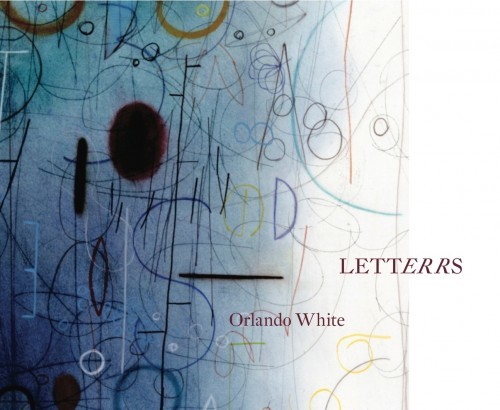Compositional Resistance: Orlando White in Conversation

At Taos Journal of International Poetry and Art, Veronica Golos introduces readers to Orlando White's latest book LETTERRS (Nightboat, 2015) and engages him in conversation. Golos writes: "In this brilliant second book, LETTERRS, Diné poet Orlando White takes space, sound, and silence into the very page. He investigates a vocabulary of linguistics and orality, creating a tension between the two." More on said space, sound, and silence:
Veronica Golos: It seems to me that with LETTERRS, you are doing two things at once: paring English down to its symbols, sounds and shapes, and, at the same time opening and doubling meaning through a vocabulary of linguistics.
Orlando White: For me, part of the book is about the peculiarity of a word, what it looks like on a page, and what it sounds like. For example, aposiopesis. On the page, it looks funny; when we first see it, we think, how do I pronounce this? Pronunciation here, and in many cases, is also apo-sentient, pronounced in two different ways. Or like anaphoric. It looks strange, so we sound it out.
VG: It also seems to me that you “force,” or encourage the reader to go on a similar experience or journey you have done as they read these poems, because the poems generate an underlying experience the writer has had with language.
OW: In my first book, Bone Light, I never used the dictionary and used a limited amount of words. In LETTERRS, I used the dictionary and thesaurus extensively, searching for words that created some sort of experience through its meanings, in which you would go on some etymological journey. But, at the same time along the way I discovered how a word was pronounced, because sound is much more intriguing.
VG: Your work took me to the dictionary and thesaurus and google, and there were words within words! Perspicacity, analphabetic, ogonek, soma, ictus, skirr, glisters, circumflex, excursus or ogive, which means: “a diagonal rib in a gothic vault; an arch that rises to a sharp point, and a graph that represents the cumulative frequencies of a set of values.” How many meanings can one cull from one word? [...]
Find out at Taos Journal of International Poetry and Art. And for a few samples of the poems, you'll want to head here.


